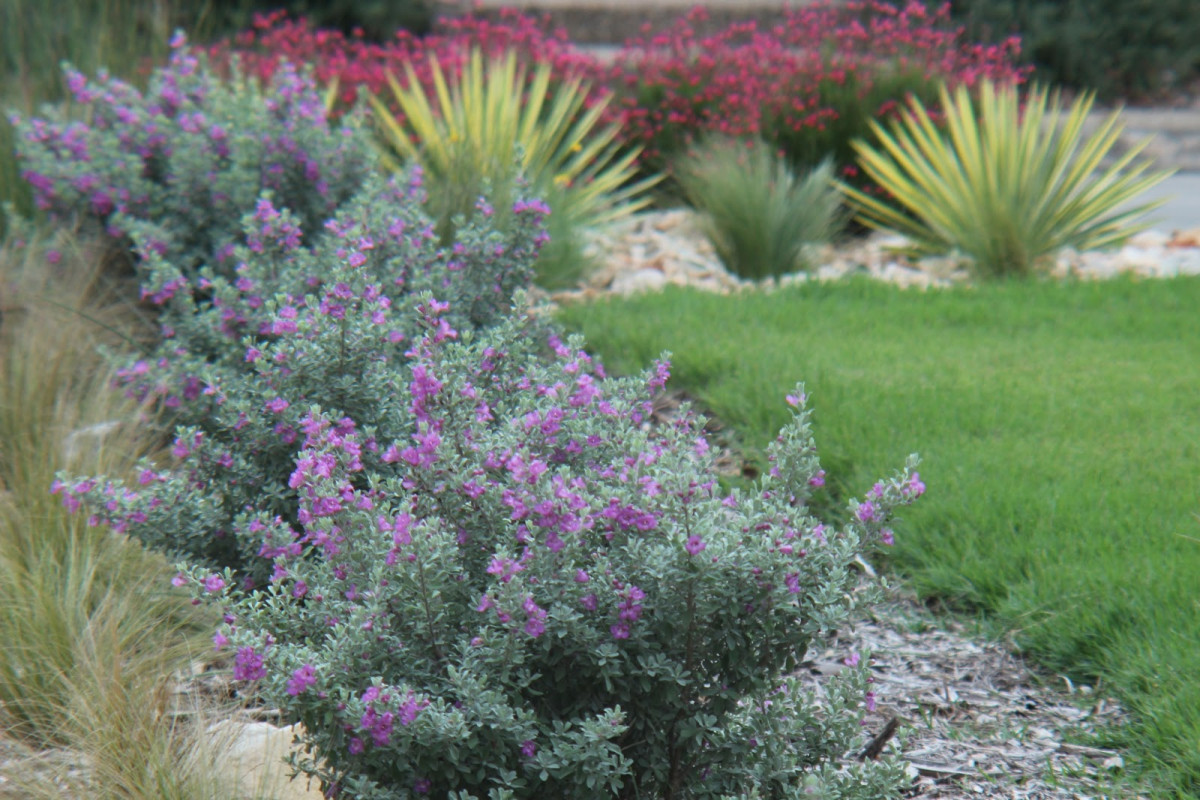
Late Garden Bloomers
School may be back in session, but the Texas heat will be lingering long after Labor Day. Luckily you can liven up your at-home learning environment with plants and trees that flower in late summer through early fall. Here’s a look at some of our favorite late garden bloomers.
Limelight Hydrangea
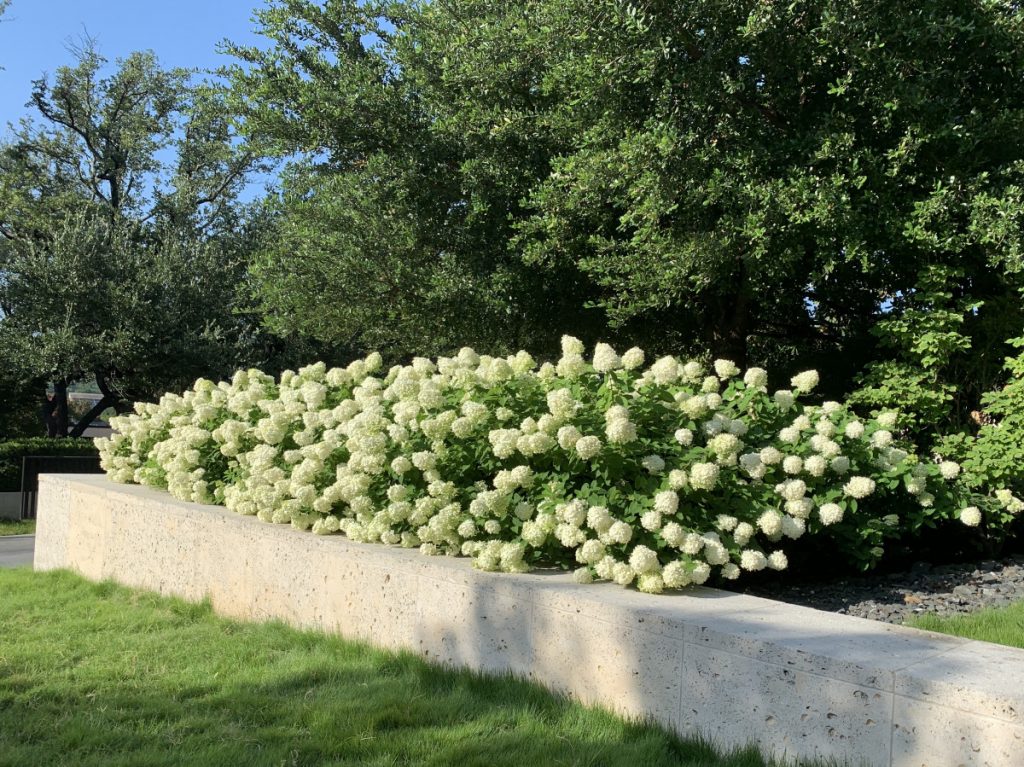
These sun-loving plants thrive in the Texas summer sun. Go for hardy Limelight hedges for full-size flower power or its petite cousin, Little Lime for border plantings. Each boasts fabulous chartreuse summer blooms that transition to pink in fall. Use their sturdy stems for fabulous floral arrangements at your next get together.
Limemound Spirea
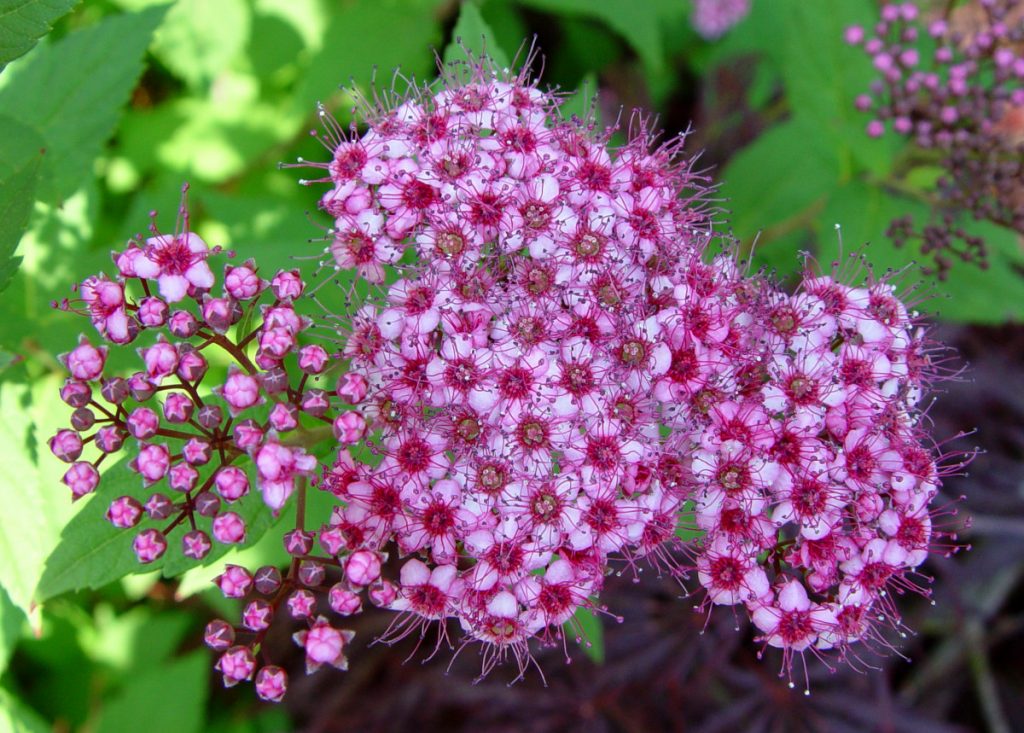
Also known as Spiraea japonica, this decadent deciduous shrub hails from the rose family. Adorned with elegant, petite clusters of hot pink flowers, with lime green colored leaves, it’s a heavenly hybrid between S. japonica and S. albiflora. As a sun-loving plant, it’s happiest in moist well-drained soils. Useful in rock gardens, hedge borders, or as ground cover, Limemound Spirea is also a beautiful butterfly catcher.
Crape Myrtle
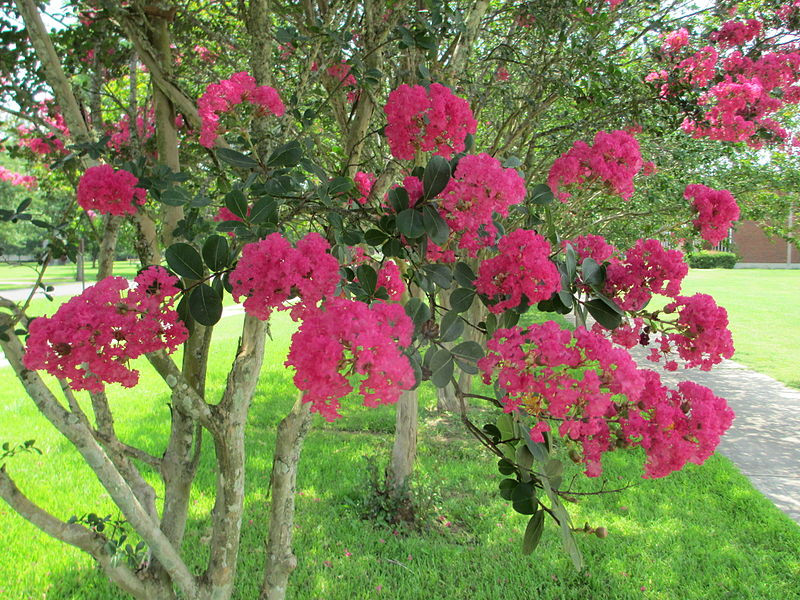
One of the most popular landscape liners, the Crape Myrtle prevails along parkways from Plano to Highland Park. These diminutive multi-trunked trees boast beautiful crepe paper-like blooms in white, pink, red, or purple atop their smooth, slender limbs. In fall, their magnificent bark manifests an artistic arrangement of long, thin, peeling strips, unveiling fresh life beneath each cascading layer. These tolerant trees thrive in a range of site conditions, including drought and slightly alkaline soils. Pruning methods can create quite the controversial Nextdoor chatter, with preservationists coining the practice of removing the entire top of the tree each winter as “crape murder.”
Texas Lilac Vitex
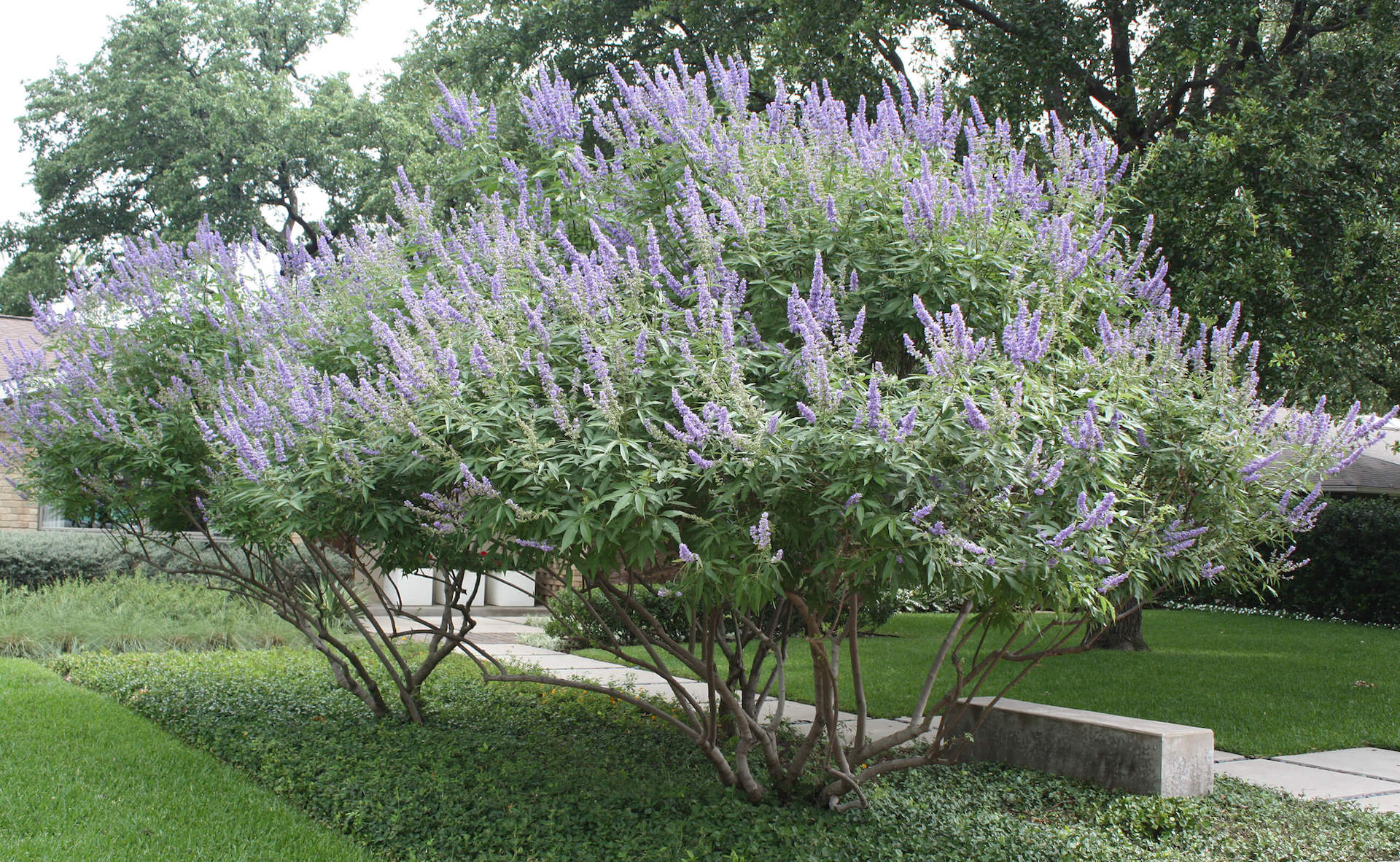
The Texas Lilac Vitex blooms in elongated lavender spikes. Also known as Mexican lavender, lilac chaste tree, hemp tree, sage tree, monk’s pepper, Indian spice or Vitex, these lovely, fragrant blooms also endure well as cut flowers. The medicinal berries of this tree have been utilized for centuries, documented by Hippocrates, Dioscorides, and Theophrast. Today their properties are widely used by naturopaths and are available over the counter as supplements to aid in hormonal balance in women.
Butterfly enthusiasts, behold—these blooms attract quite the spectacle. Vitex thrives in full sun in a location with either acidic or alkaline soils and adequate drainage. This deer-resistant tree thrives in our hot Texas climate, particularly in drier areas. The Texas Department of Transportation is a fan and often plants Vitex in highway medians.
Texas Rain Sage
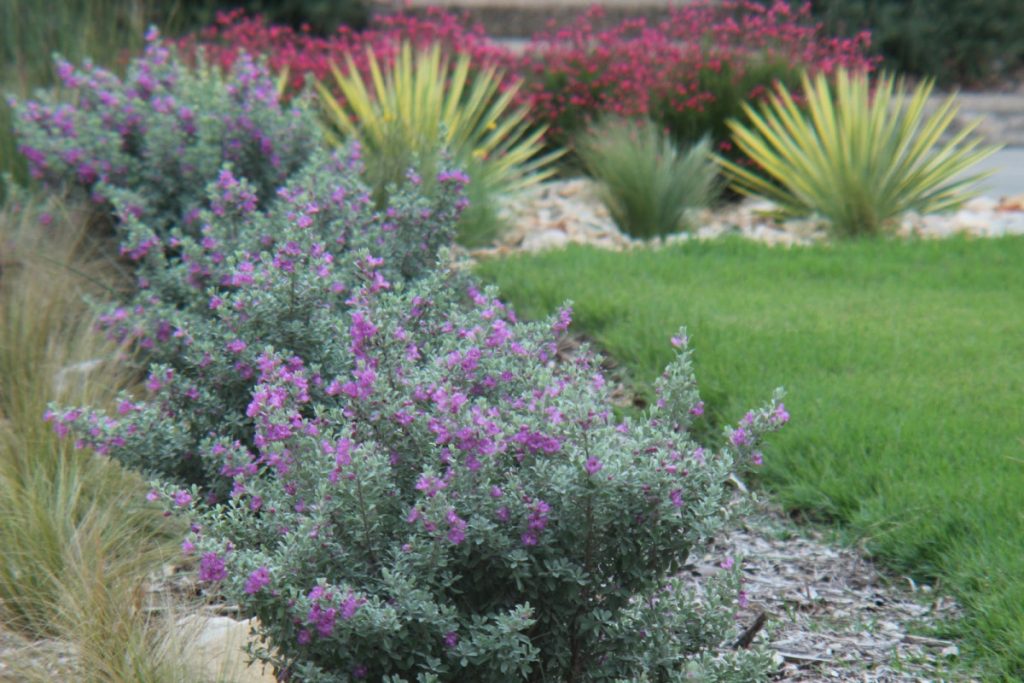
Also known as Cenizo, Texas Ranger, Texas Silverleaf, Ash-bush, Wild Lilac, Purple Sage, Senisa, Cenicilla, Palo Cenizo, Hierba del Ceniz, this notorious native plant succeeds remarkably in the sweltering summer. It is affectionately referred to as the “barometer bush” because its flowers flourish in high humidity or after periods of heavy rain. These medium-sized shrubs deliver delicate silvery to gray-green leaves and prolific purple blooms from summer into fall. Another favorite for highways and commercial landscapes, due to its hardy nature and limited watering needs, this highly heat-tolerant hedge requires full sun and well-drained alkaline soil in order to survive within a residential landscape.
Trumpet Vine
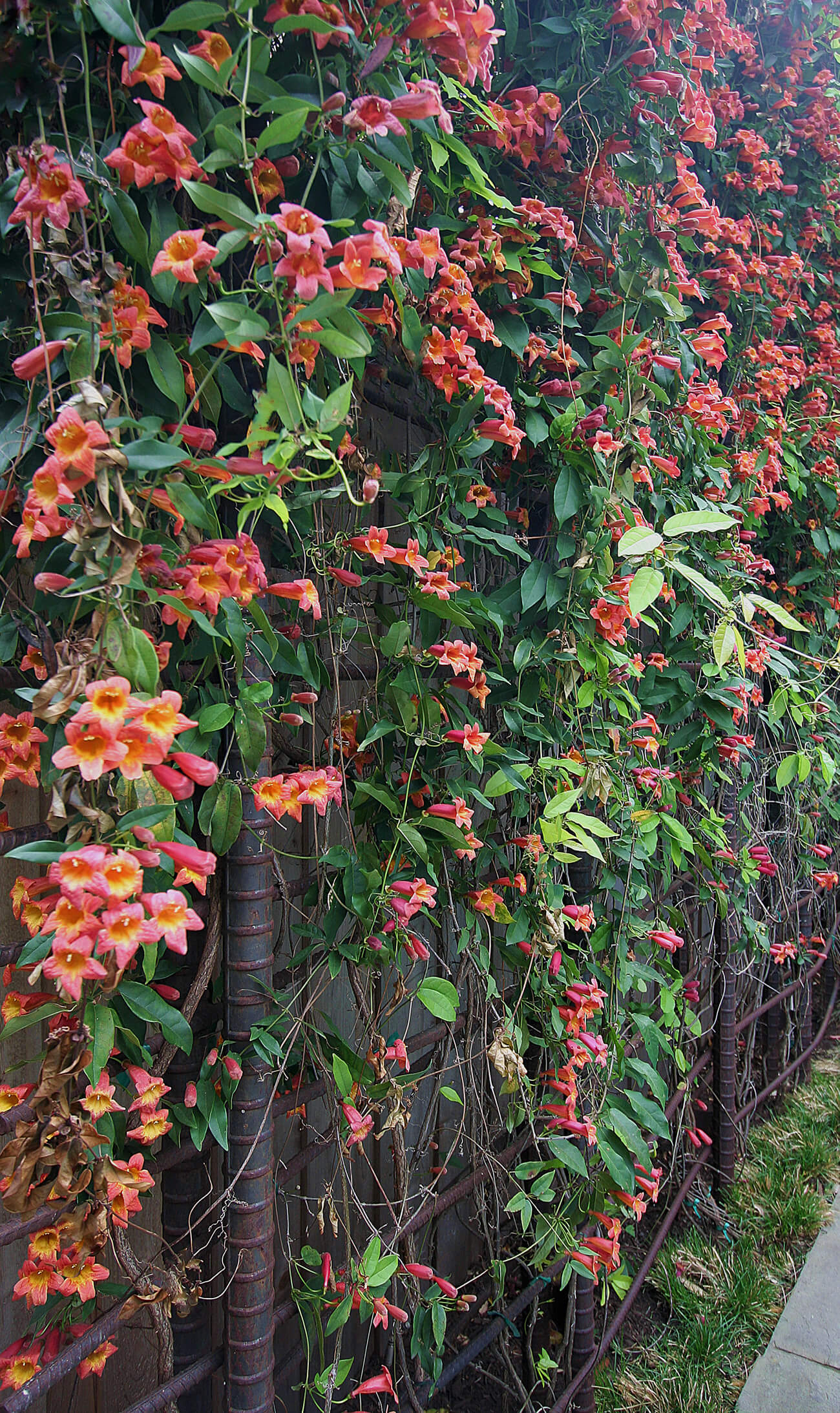
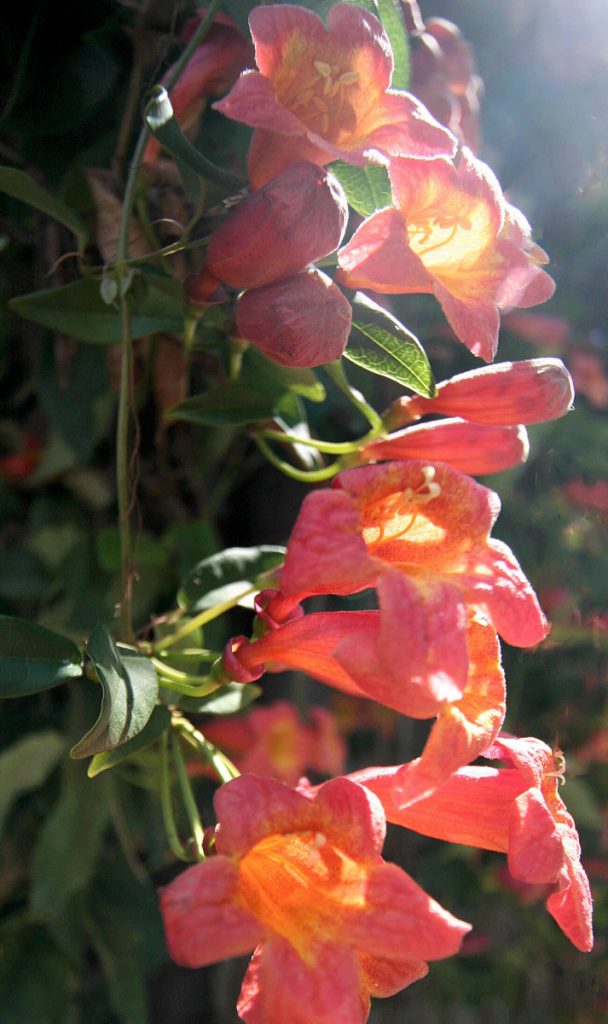
The high-climbing Trumpet Vine boasts broadly vivid reddish-orange, trumpet-shaped blooms in clusters in the summer sun. Colonizing by suckers and layering makes it advantageous for erosion control, and its fabulous flowers attract Ruby-throated Hummingbirds. This voracious vine climbs via aerial rootlets, which, if not kept in check, can damage wood, stone, and brick. See more of this project
If your garden is feeling less than gorgeous, contact us and we’ll help color your world.
Resources:
North Carolina Extension Gardener Plant Toolbox